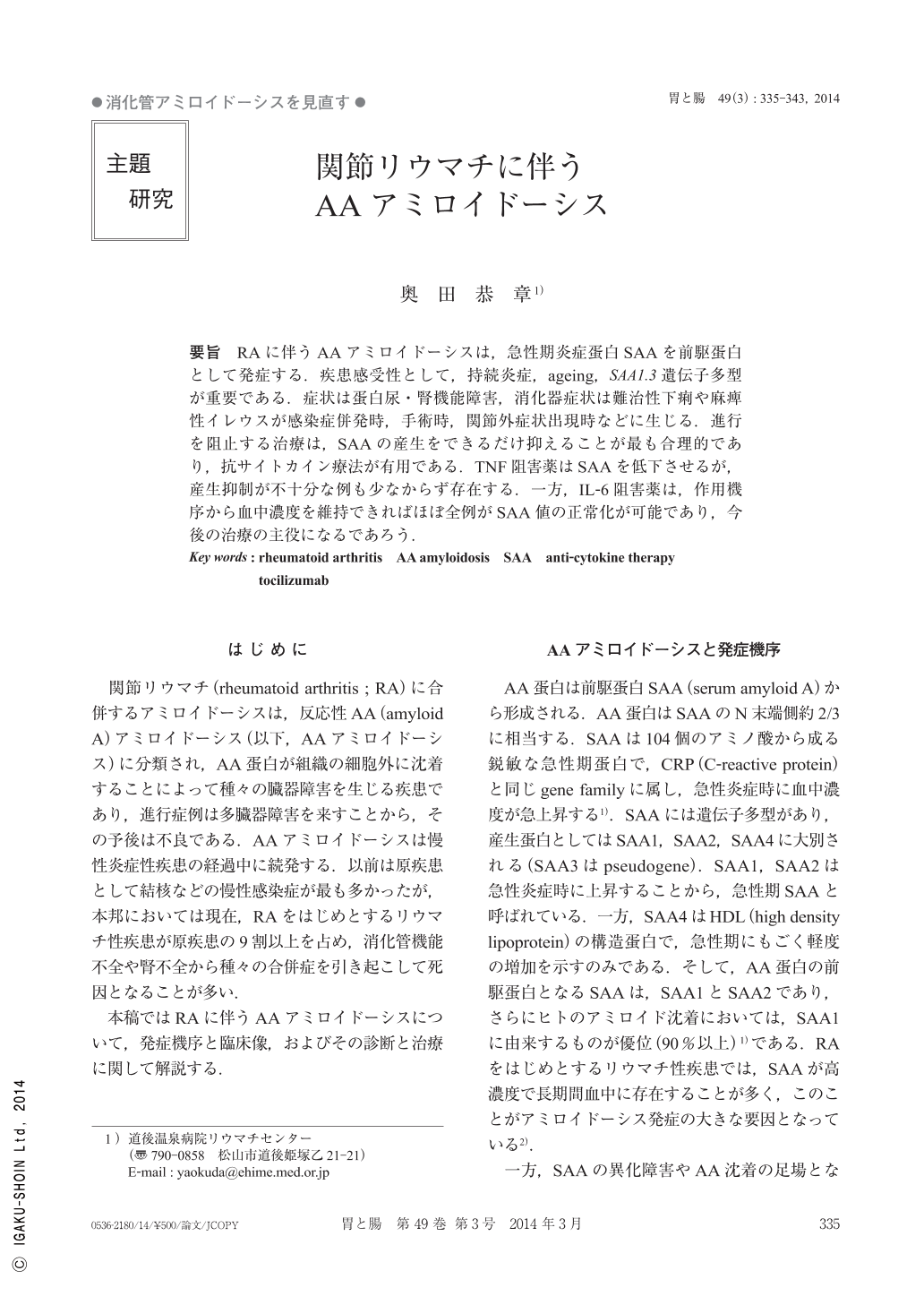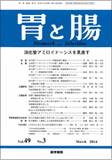Japanese
English
- 有料閲覧
- Abstract 文献概要
- 1ページ目 Look Inside
- 参考文献 Reference
- サイト内被引用 Cited by
要旨 RAに伴うAAアミロイドーシスは,急性期炎症蛋白SAAを前駆蛋白として発症する.疾患感受性として,持続炎症,ageing,SAA1.3遺伝子多型が重要である.症状は蛋白尿・腎機能障害,消化器症状は難治性下痢や麻痺性イレウスが感染症併発時,手術時,関節外症状出現時などに生じる.進行を阻止する治療は,SAAの産生をできるだけ抑えることが最も合理的であり,抗サイトカイン療法が有用である.TNF阻害薬はSAAを低下させるが,産生抑制が不十分な例も少なからず存在する.一方,IL-6阻害薬は,作用機序から血中濃度を維持できればほぼ全例がSAA値の正常化が可能であり,今後の治療の主役になるであろう.
AA(amyloid A)amyloidosis complicating rheumatoid arthritis might develop in patients with active chronic inflammation. SAA(serum amyloid A), the precursor of AA protein, is highly amplified in the liver under the stimulation of inflammation-associated cytokines such as IL-6, TNF, and IL-1. Sustained inflammation, ageing and SAA1.3 genotype are independent risk factors for the formation of AA amyloidosis, respectively.
The most rational treatment of AA amyloidosis is just to inhibit the production of SAA. At present, treatments of AA amyloidosis by anti-cytokine therapies have been stressed. TNF inhibitors reduce SAA levels, but complete normalization is rare. However, IL-6 inhibitor(Tocilizumab, TCZ)can normalize SAA levels in almost all patients in whom a sufficient concentration of TCZ is maintained in the blood. Treatment with TCZ could, therefore, represent an important therapeutic strategy for AA amyloidosis secondary to rheumatoid arthritis.

Copyright © 2014, Igaku-Shoin Ltd. All rights reserved.


